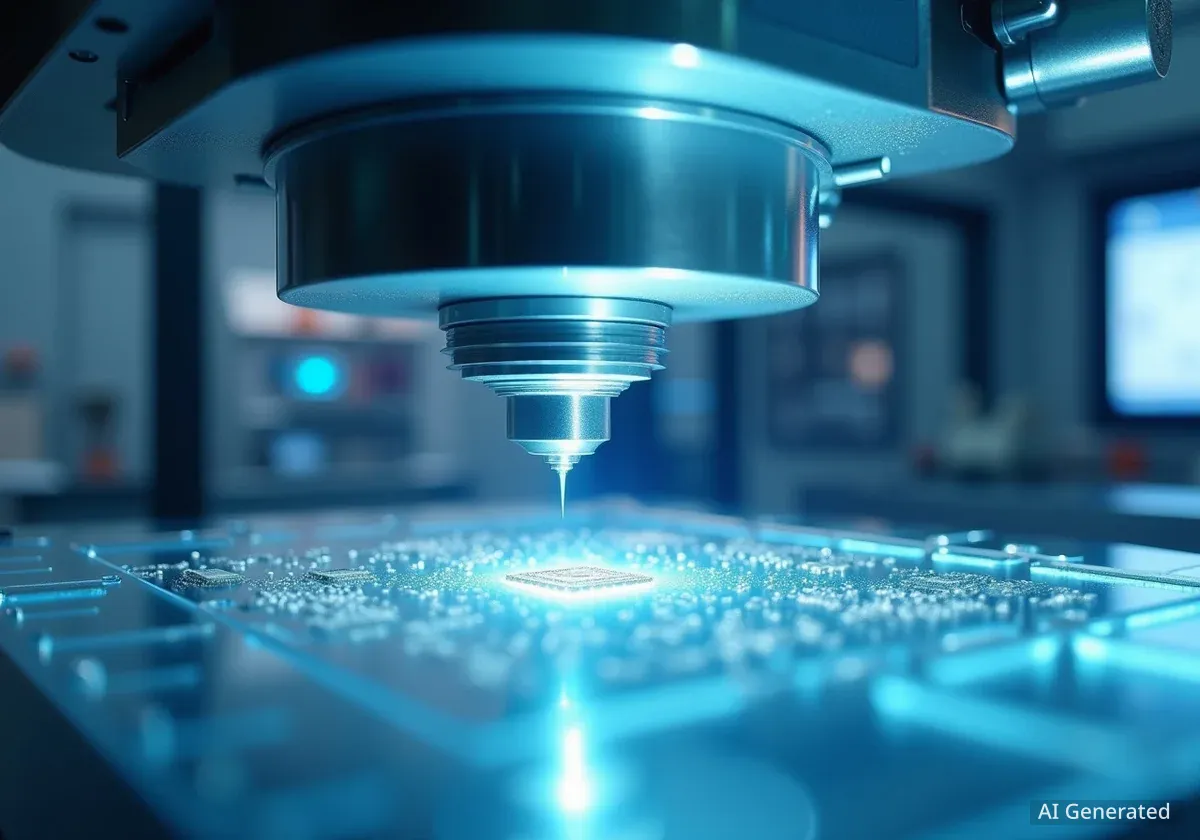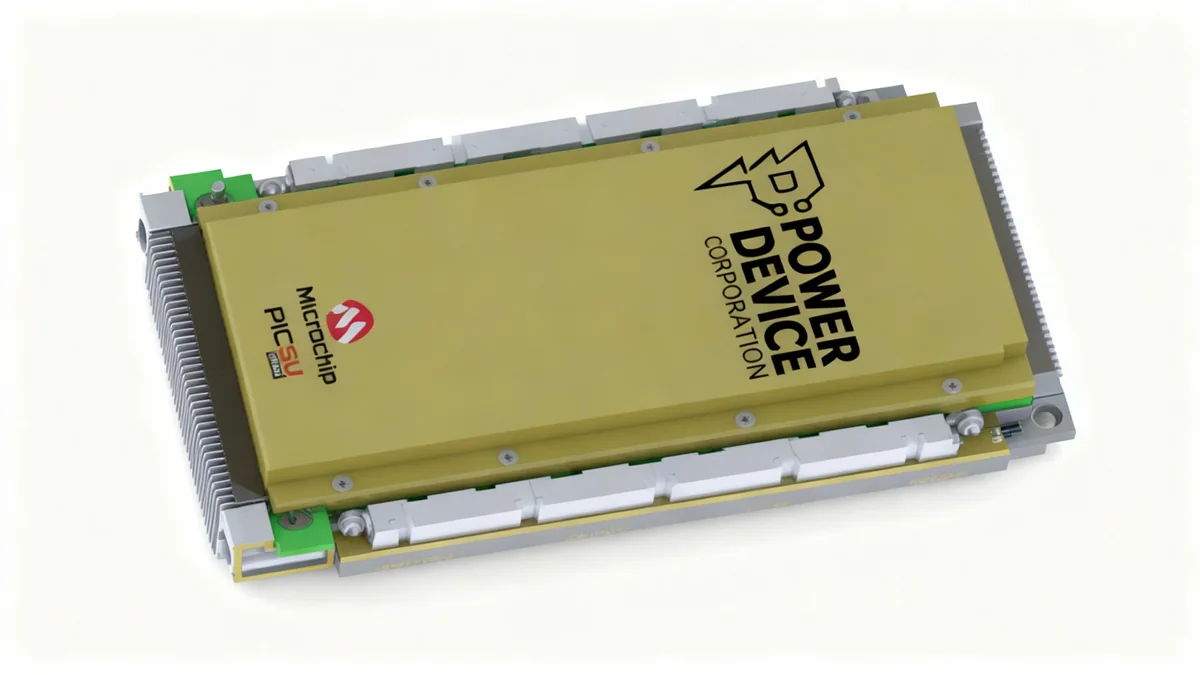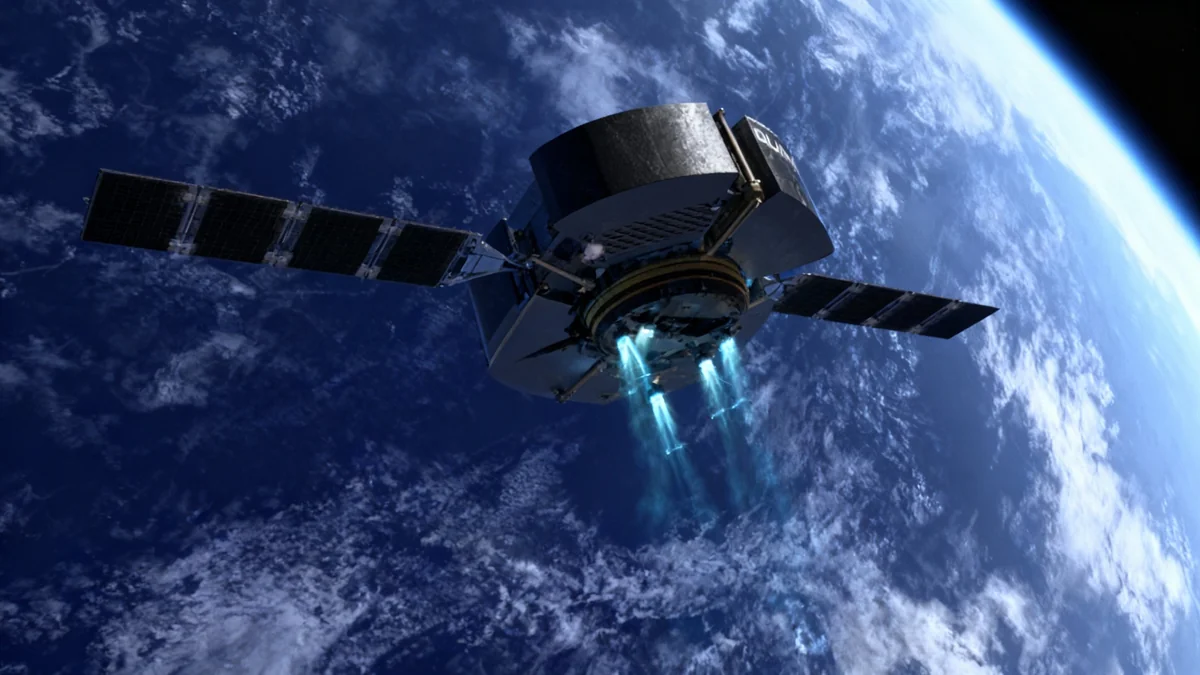Researchers have developed a new technique for fabricating electronic devices directly in space, a significant step toward self-sufficient, long-duration missions. The method combines high-precision inkjet printing with laser technology to create conductive silver components in microgravity, potentially changing how equipment is built and repaired beyond Earth.
This innovation addresses a major logistical hurdle in space exploration: the need to launch all necessary electronics from the ground. By enabling on-demand manufacturing in orbit, this technology could reduce mission costs, increase flexibility, and support future habitats on the Moon and Mars.
Key Takeaways
- A new process combines electrohydrodynamic (EHD) inkjet printing and laser sintering to produce electronics in microgravity.
- The technology allows for the on-demand fabrication and repair of electronic circuits in space.
- This could significantly reduce the dependence on Earth-based supply chains for future space missions.
- The method was validated through experiments simulating microgravity conditions, confirming its viability for orbital use.
A New Approach to In-Orbit Production
For decades, space missions have been constrained by what can be packed into a rocket. Every component, from complex scientific instruments to simple replacement parts, must be manufactured on Earth, tested, and transported into orbit. This process is expensive, time-consuming, and leaves little room for error or adaptation once a mission is underway.
The new manufacturing method aims to solve this problem by creating an in-space factory for electronics. The research, published in npj Advanced Manufacturing, details a system capable of producing high-performance electronic components without the influence of gravity. This capability is a foundational element for what experts call in-situ resource utilization, where materials and manufacturing are handled locally in space.
What is In-Space Manufacturing?
In-space manufacturing refers to the production of parts and devices in orbit or on other celestial bodies. The goal is to create a self-sustaining presence in space by reducing the need to launch everything from Earth. This includes everything from 3D printing tools and structures to fabricating advanced electronics for satellites and habitats.
The ability to print electronics on demand would allow astronauts to create custom tools, repair critical systems, and even prototype new devices during a mission. This level of autonomy is considered essential for future deep-space exploration, where resupply missions from Earth would be impractical or impossible.
How the Technology Works: Printing and Sintering
The breakthrough relies on the integration of two advanced technologies: electrohydrodynamic (EHD) inkjet printing and laser sintering. Each step is carefully adapted to function in a microgravity environment, where the behavior of liquids and materials is fundamentally different.
Step 1: Electrohydrodynamic Inkjet Printing
Unlike a conventional desktop printer, EHD inkjet printing does not rely on heat or pressure to eject ink. Instead, it uses a strong electric field to pull tiny droplets of conductive silver ink from a nozzle. This process allows for extremely fine control and high resolution, creating patterns with nanoscale precision.
This level of detail is crucial for modern electronics, where circuits are becoming increasingly small and complex. The EHD method ensures that the printed silver lines are sharp and consistent, which is necessary for reliable electrical performance.
Step 2: Laser Sintering in Microgravity
After the silver ink is printed onto a substrate, it consists of countless tiny, separate nanoparticles. To make it electrically conductive, these particles must be fused into a solid, continuous line. This is achieved through laser sintering.
A precisely controlled laser beam scans over the printed pattern, heating the silver nanoparticles to a point where they melt and merge. The process is fast and localized, so it fuses the silver without damaging the underlying material. According to the study, researchers had to carefully calibrate the laser's power and speed to account for different heat dissipation in microgravity.
Overcoming Physics in Space
On Earth, gravity helps stabilize liquids and powders used in manufacturing. In space, forces like surface tension and capillary action become dominant. The research team meticulously studied these effects to optimize the ink's properties and the printing process, ensuring it works reliably without gravity.
Implications for Future Space Missions
The strategic value of this technology for space exploration is immense. It represents a shift from a disposable, Earth-dependent model to a more sustainable and independent presence in space.
On-Demand Repair and Customization
One of the most immediate applications is the repair of existing equipment. If a circuit board on a satellite or space station fails, astronauts could potentially print a replacement component instead of waiting months for a resupply mission. This enhances mission safety and longevity.
"The capability to print and sinter conductive silver patterns directly in space paves the way for on-demand manufacturing of electronic devices, enabling rapid prototyping, repair, and customization without dependence on Earth-supplied hardware."
Furthermore, astronauts could design and fabricate custom electronic tools tailored to specific scientific experiments or unexpected challenges that arise during a mission. This flexibility could accelerate the pace of research and discovery.
Reduced Mission Costs and Mass
Launching mass into orbit is extremely expensive, with costs often running into thousands of dollars per kilogram. By manufacturing electronics in space, missions can reduce the total payload mass they need to launch from Earth. Instead of carrying numerous spare parts, a mission could carry raw materials like conductive ink, which are far more compact and versatile.
This reduction in launch mass and volume leads to more economical and sustainable space operations, freeing up resources for other critical scientific instruments or supplies.
The Path to Self-Sufficient Space Habitats
Looking further ahead, this type of in-space manufacturing is a critical building block for establishing permanent human settlements on the Moon and Mars. Future colonies will need to be as self-sufficient as possible to survive.
This technology could be used to:
- Build and maintain life-support systems: Repairing or upgrading the electronics that control air, water, and power is vital for survival.
- Set up communication arrays: Fabricating components for antennas and communication equipment would ensure a reliable link to Earth.
- Create scientific instruments: Colonists could build new sensors and tools using local resources, expanding their research capabilities.
The research team successfully tested their system on parabolic flights, which simulate short periods of microgravity. These experiments provided crucial data confirming that the process is robust and adaptable to space environments. The next steps will involve further refinement, including the integration of multi-material printing to create more complex devices with both conductive and insulating layers.
While full-scale automated production lines in space are still some years away, this research demonstrates that a key technological barrier has been overcome. The ability to print electronics in orbit is no longer science fiction but a tangible engineering reality that will help shape the future of human activity beyond Earth.





